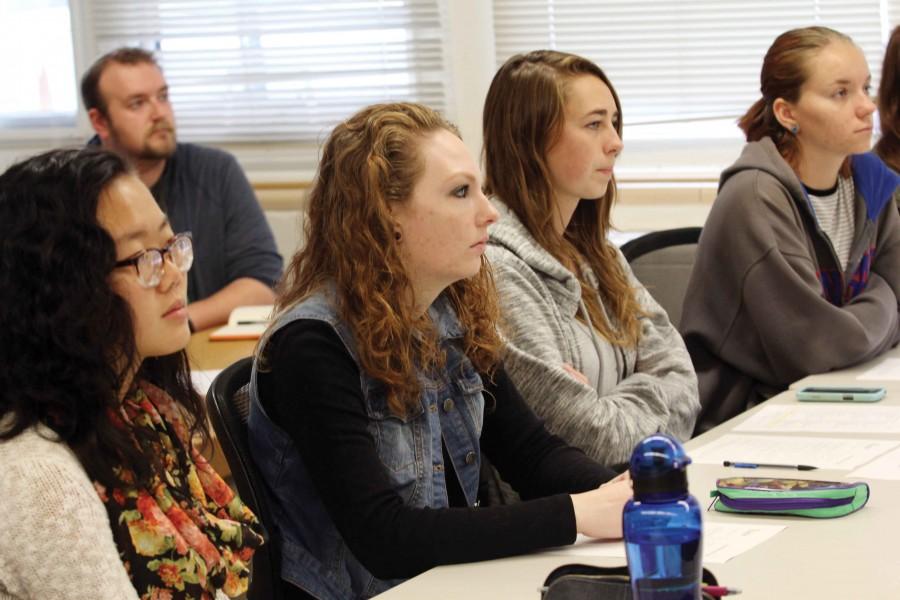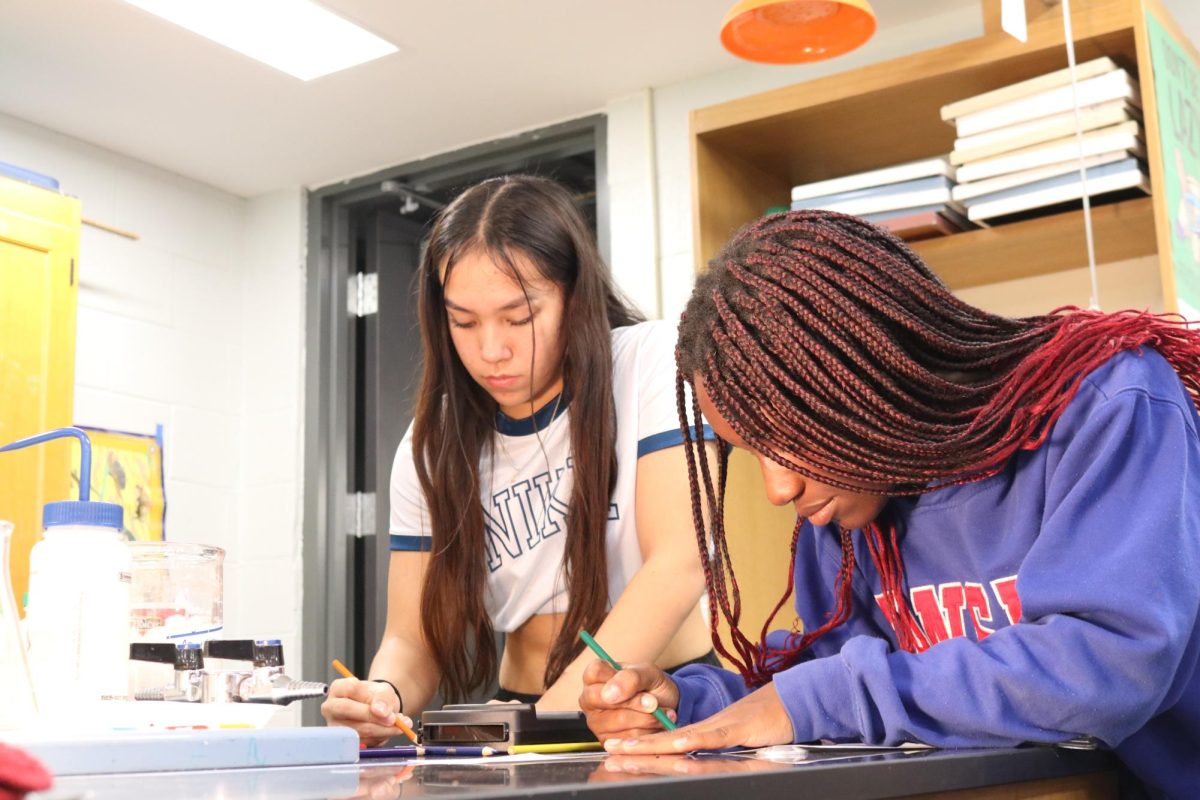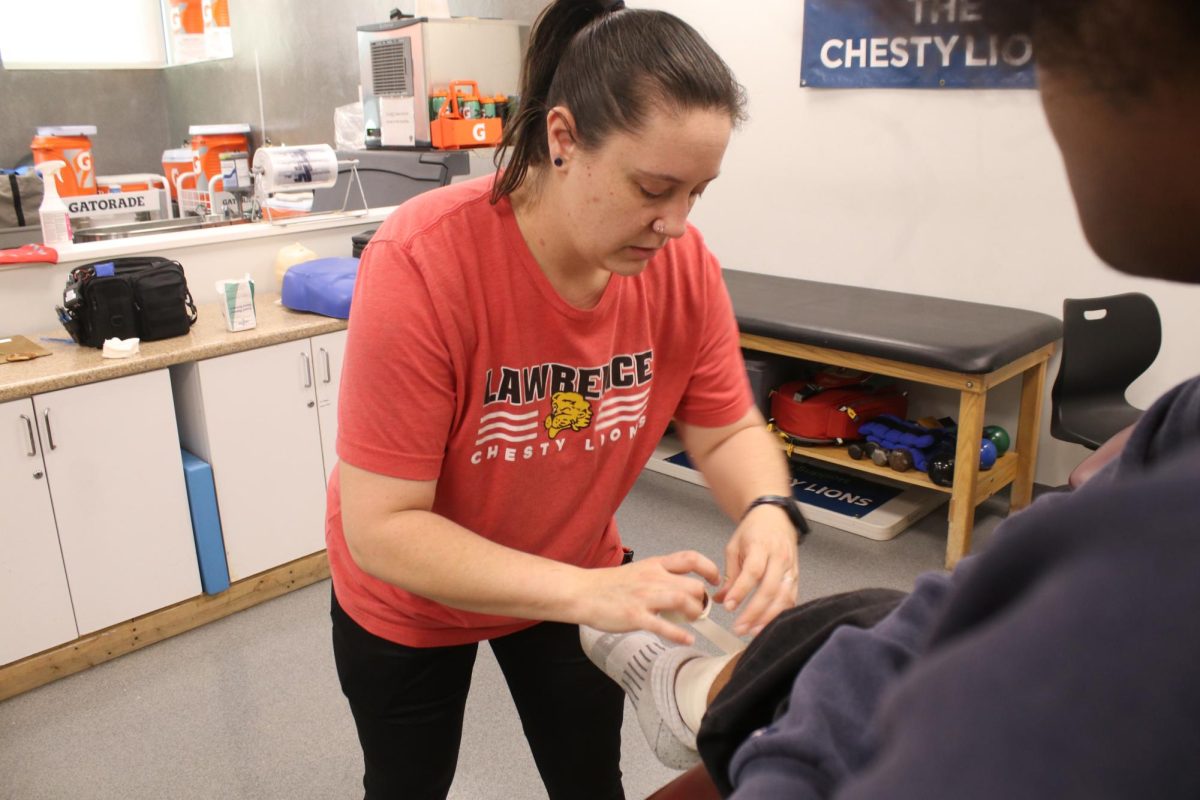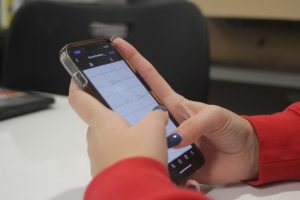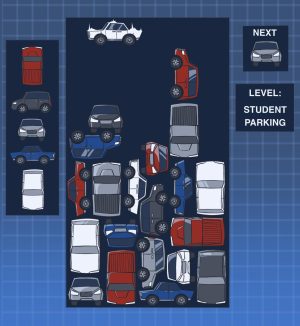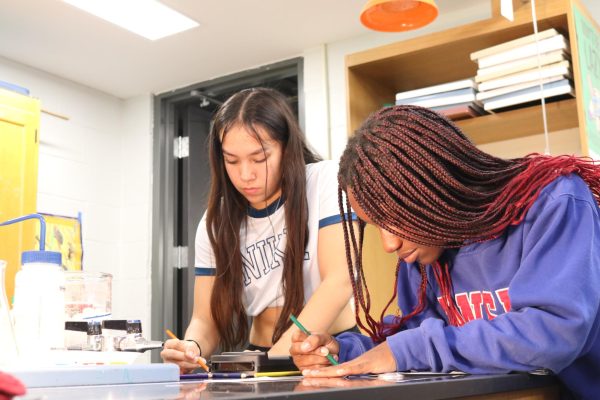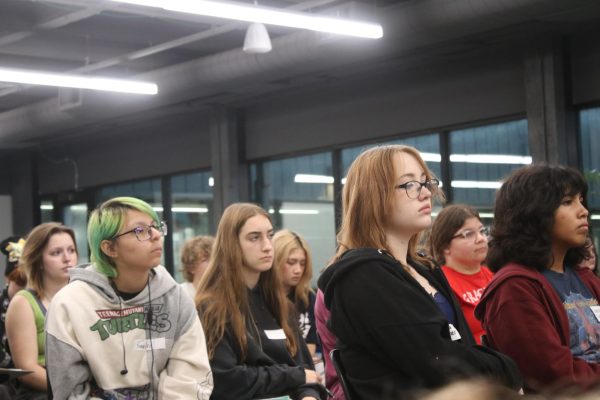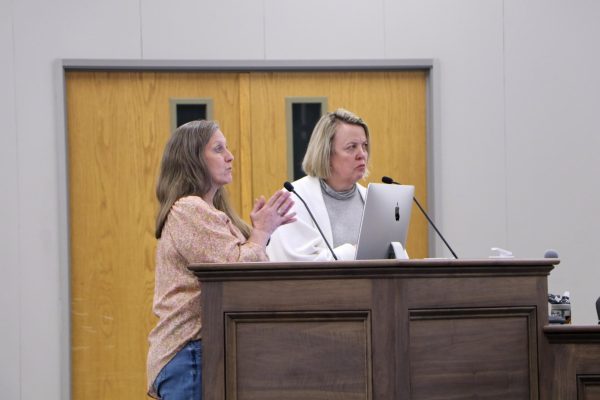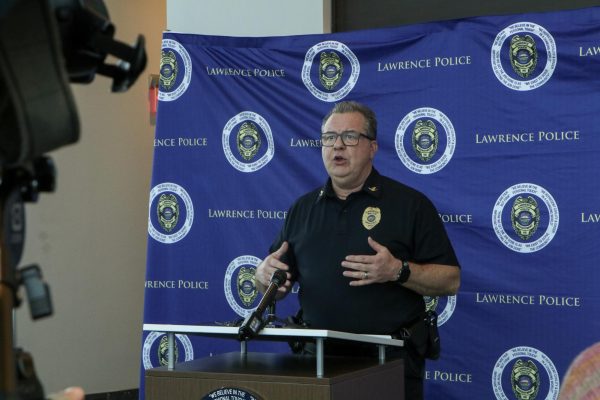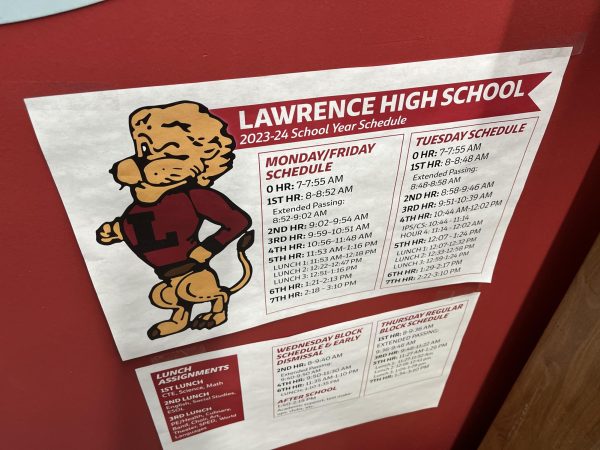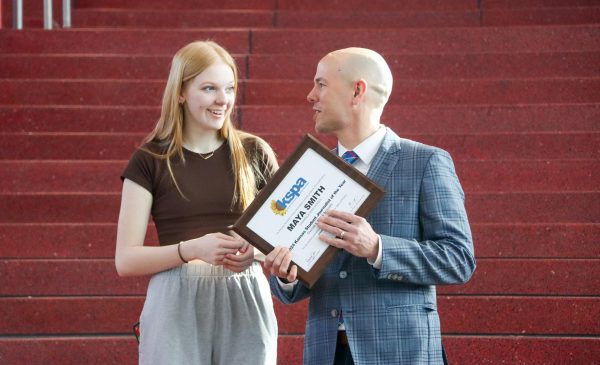Students train to prevent suicide
Sophomore Chisato Kimura, and seniors Anna-Marie Turner, Payton Smith and Kaytlin Riedesel training to become Yellow Ribbon Ambassadors. “I took it because a few of my friends have experienced thoughts of suicide,” Smith said. “And I want to be able to help people.”
December 10, 2015
They look like regular business cards. They could fit in your back pocket or your wallet. But the card has more than just a name and phone number.
“This ribbon is a lifeline!” the message shouts.
The card has phone numbers for two suicide hotlines, as well as instructions for helping a person who is considering suicide.
Students and teachers will see these cards more as the Yellow Ribbon program is implemented at LHS and every other district school. Teachers will be trained to help students who approach them with no questions asked.
The school district began implementing the Yellow Ribbon program not with faculty and staff, but with students.
On Nov. 18, 19 LHS students were trained as Yellow Ribbon ambassadors. They spent the morning learning about the risks and causes of teen suicide as well as techniques to help peers who may be at risk.
“I wanted to be able to help people,” sophomore Satori Good said. “[I want to] be able to help if ever there was a situation where someone was suicidal that was my friend. It’s important to be educated about things like that.”
The students were taught by Jose Conrajo, the mental health coordinator for the district. They watched videos, presentations and discussed the causes of suicide for teens and how to intervene.
Cornajo said the district is using Yellow Ribbon to train students to direct peers to other resources, since they have more connections with students than counselors typically do.
“[Yellow Ribbon is] using those students to raise awareness and be another set of eyes, [it is] students helping students,” he said.
The Yellow Ribbon is a national program started by Dale and Dar Emme in 1994 in memorial for their son, Mike, who committed suicide. They used the color yellow because he owned a bright yellow Ford Mustang, and his friends and community members handed out yellow ribbons at his funeral.
Suicide is the third leading cause of death in people age 10-24. Cornajo said at the training the district has intervened with students as young as third grade.
Teens are a high-risk group for suicide for several reasons, Cornajo said. One of the main factors is an effect called stacking.
Stacking is when several stressors — school, family, social life, finances, etc. — accumulate. Sometimes when enough factors have “stacked,” teens will be more likely to become suicidal.
Chris Maxwell of Headquarters Counseling Center, who attended the Nov. 18 meeting, used the analogy of a glass of water to illustrate stacking. He compared a person’s capacity to handle stress to a cup and each cause of stress as pouring water into it. The cup can only handle so much water, and once enough is poured in, it will overflow. Maxwell said the point where someone is overwhelmed by a series of stresses is one where they’re more likely to consider suicide.
At the meeting, students discussed factors that typically stress out high school students. Of the list they generated, an overwhelming number were school-related.
“There’s…the stress factor, like you have a homework assignment that you can’t get done and bad grades on something, and it kind of all builds up,” Good said.
According to a study done by the Centers for Disease Control and Prevention in 2013, 17 percent of high school students seriously considered suicide within the 12-month period of the survey, and 8 percent reported attempting suicide within the time frame.
During the discussion, students said suicide is almost never addressed at school.
“We don’t really address [suicide] very well,” senior Kaytlin Riedesel said. “It’s not really something that we’ll go and talk about, seriously talk about. I think that it’s [Yellow Ribbon] a really cool thing to get kids involved in, to get kids to know suicide is not something to joke around with.”
Senior Mariah Shelton is a member of the FYI Club, which aims to educate students in the district about different risk behaviors from alcohol to dating violence. The one thing FYI does not address in detail, she said, is mental health, specifically suicide.
“[Suicide] is something that we really don’t talk about very often, with FYI especially,” she said. “Because we have a whole bunch of panels on drugs and alcohol but we don’t really answer any topics about suicide prevention.”
And while there are resources within the school students can utilize to address mental health issues, like the school counselors and the WRAP officers, the Yellow Ribbon ambassadors said at the training that most of their peers either didn’t know about their options or would not feel comfortable approaching an adult if they were suicidal.
The students said that although people may know their counselors in an academic context, they’re not likely to know them personally enough to bring personal issues to them.
“In elementary school you’d be a lot closer to your counselors, so it’s a lot easier to talk to them,” senior Kenzie Turner said. “People don’t really want to talk to their counselor if they don’t know anything about them. I wouldn’t personally want to open up to somebody that I didn’t know very well.”
The staff members students interact most with are teachers. Yellow Ribbon students said their peers are more likely to feel comfortable talking to teachers about their personal issues rather than other staff members. However, there is only so much teachers can keep confidential, which also worries students.
All school staff members are mandated reporters, which means if they think a student’s safety is threatened, they have to report information, which could break trust with the student who confided in them.
Students at the training said people may feel more comfortable going to school staff if they knew where their information would potentially be reported.
In most cases, if a staff member deems a student to be in a threatening situation, they report it the Department of Children and Families. If the threat is immediate, they may contact the police.
The Yellow Ribbon program aims to give students people trained in suicide prevention who they’d feel more comfortable talking with than adults.
“It definitely helps when peers are training for these things,” junior Christa Griffin said. “Sometimes adults just don’t get it, and someone that’s your age or even your gender would understand it a lot more.”
The ambassadors were taught specific strategies to intervene if one of their peers was suicidal.
They were told to:
- Stay with the person
- Listen to them and take them seriously
- Seek out help immediately



